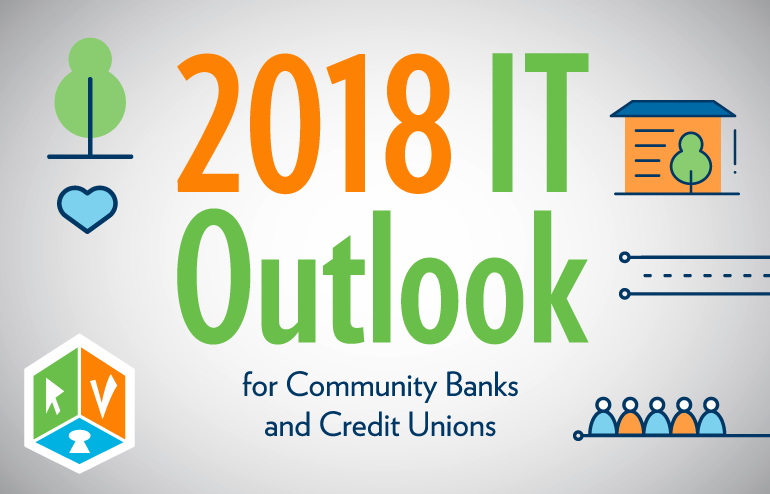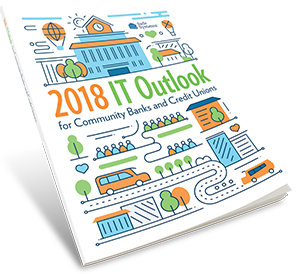
For the third consecutive year, we surveyed community banks and credit unions to gain a better understanding of their current IT situation, top IT priorities and challenges, security and compliance issues as well as future technology investments on the horizon. Our third annual report, “2019 IT Outlook for Community Banking,” analyzes survey feedback from approximately 164 respondents representing a range of community banks and credit unions across the U.S. with asset sizes from less than $100 million to more than $1 billion.
This report is designed to offer community banks and credit unions with valuable peer data that can provide guidance for key IT, compliance and security decisions in 2019 and beyond. The data reinforces that community financial institutions continue to recognize the importance of using technology in the current banking environment and remain committed to investing in new technologies and services as needs evolve. However, they continue to face certain challenges, often related to technology, heading into 2019.
Here are some key IT challenges and trends from the survey results:
Information Security Continues to be the Top Challenge
According to 43% of survey respondents, information security continues to be a top challenge. Falling victim to security breaches and associated attacks is very costly for community banks and credit unions, both from a financial and reputational standpoint. According to Cybersecurity Ventures, the global cost of cybercrime damages will hit $6 trillion annually by 2021. This includes damage and destruction of data, theft of personal and financial data, and disruption to the normal business operations, among others. In addition, as the number of security threats continues to increase in the financial services industry, regulators are taking a closer look at financial institutions’ policies and procedures to ensure that they can effectively safeguard confidential and non-public information. All of this has led to 57% of respondents planning to strengthen and increase budgets for IT security solutions in 2019.
Personnel Expertise and Resources Becoming a Greater Concern
According to 42% of respondents, having the right personnel resources is now a top challenge for their financial institution. Managing an IT network is a very demanding responsibility. An IT administrator needs to truly understand the increasing complexity of IT operations, continuously changing regulatory requirements, FFIEC compliance guidelines, and evolving security threats. However, many community banks and credit unions are often located in areas that lack the qualified personnel resources to efficiently manage these responsibilities, making it financially challenging for them to employ the seasoned IT technology team required. This trend is encouraging community financial institutions to augment their IT departments with outsourced service providers who are able to help them navigate technology, security, and compliance required today.
Keeping Up With Changing Customer Expectations Continues to be a Challenge
Approximately 42% of survey respondents claim that keeping up with changing customer expectations is their greatest challenge moving into the New Year. The advancement of technology, online banking services, compliance and regulatory requirements plus the growing demand from customers to have 24/7 access to their financial lives, have made the business of banking more challenging. This challenge has led to many institutions making additional technology investments in customer satisfaction or solutions to better meet market needs. According to 55% of survey respondents, this is the main reason or factor for making technology investments in the coming year. Customer satisfaction has become increasingly important and delivering a great customer experience is what gives banks and credit unions a competitive advantage.
Other areas of survey respondents mentioned as challenges include automating manual processes, managing budget restraints, eliminating redundant technology, remaining compliant with changing regulations, reporting and exam preparation, disaster preparedness, and providing secure mobile technology. This is the first year mobile technology was mentioned, but it is no surprise, as more and more consumers are turning to their mobile phones for basic banking tasks, such as depositing checks, checking their balances, and transferring money between accounts.
To gain more insights into the key challenges, goals and opportunities facing banks and credit unions today, please download the full report here.













